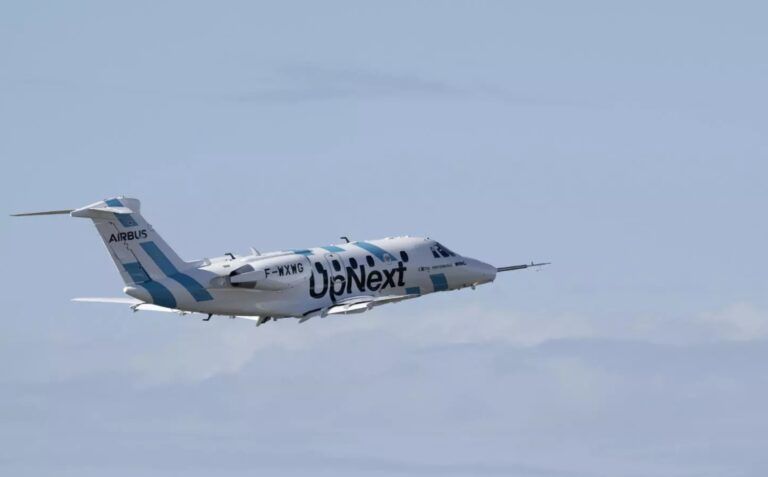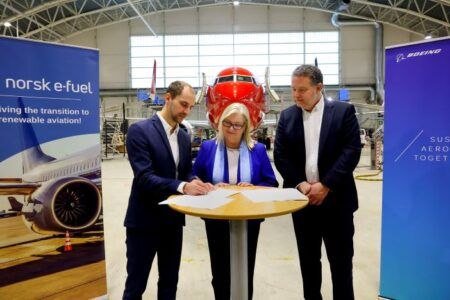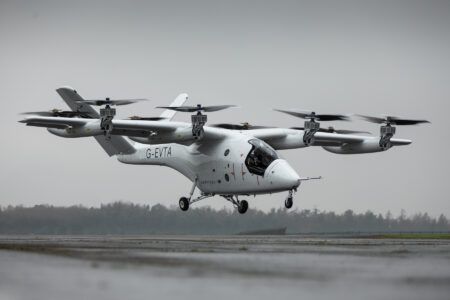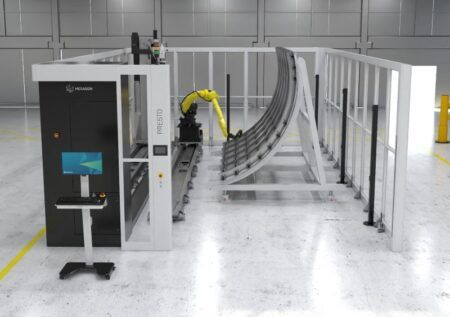Airbus has flown for the first time a Cessna business jet it is using to test active control technologies which will enable a wing to change shape and fly more like birds do.
The eXtra Performance Wing project, which launched in September 2021 aims to develop wings that can dynamically adapt to flight conditions and maximize aerodynamic efficiency. The project is testing active control technologies such as gust sensors and pop-up spoilers, as well as physical changes to the wing structure.
Other on-wing devices to be tested include plates that rapidly deflect perpendicular to airflow, multifunctional trailing edges that dynamically change wing surface and a semi-aeroelastic hinge.
Engineers are using biomimetics, engineering inspired by biology to make the wing work similarly to how birds fly. Birds adapt the shape, span and surface of their wings and feathers to increase flight efficiency.
Increases in flight efficiency translate to reductions in fuel consumption and CO2 emissions in aircraft.
Cessna modifications
The flight testing is using a modified Cessna Citation VII business jet, although Airbus has said that the concepts being developed could be applied to any kind of aircraft and propulsion system.
The targeted wingspan of the eXtra Performance Wing is more than 50m (164ft) – for comparison an A320 wingspan is 35.8m (117ft). The Cessna’s 16m (52ft) wingspan represents an approximately one-third scale model of the final design.
The Citation jet has been fitted with the systems that it will carry during the eXtra Performance Wings testing and was flown for a baseline test earlier this month.
The data gathered from this and subsequent flight tests will allow engineers to measure performance metrics that will be used to determine the impact of the new wing design, such as reductions in CO2 emissions and fuel consumption.
Sebastien Blanc, eXtra Performance Wing Technical Director said, “Things are simpler at a smaller scale. But we chose the Cessna specifically because it constituted the best trade-off between project complexity and representativeness of the final design.”
The wings will be attached to the Cessna in 2024 and undergo ground testing Cazaux, France. A remote operation system will also be integrated into the aircraft, followed by flights to test the communication between the 20 antennas on the aircraft and the control centre on the ground.
The first test flight with the eXtra Performance Wings is planned for 2025.
A 3D-printed wind tunnel model has already been tested at low speeds at Airbus’ wing research facility in Filton, UK to prove the feasibility of the concept. Data from that was used to finalize the design, and manufacturing of the different wing parts has begun.
Key technologies being tested
The gust sensors on the front of the aircraft will register changes in turbulence, triggering relevant adjustments to the control surfaces of the wing. Blanc said, “This system is designed to be entirely automatic. The eXtra Performance Wing technologies, which change the shape of the wing by mimicking a bird’s feathers, will adjust automatically to maximize aerodynamic flow.”
The hinged wingtips have a dual purpose. On the ground, they prevent the aircraft from exceeding the maximum wingspan length that can be accommodated at airport gates (36m), and in the air their flexibility enables them to change shape to avoid putting too much pressure on the wing. The wingtips also allow for a longer span to be achieved, increasing lift and reducing drag.
The eXtra Performance Wing demonstrator’s wings were produced in the UK, Spain is building the folding wingtips, and the high lift system will be designed in Germany. The modification and assembly of the aircraft will take place in France.
Remote pilots
The demonstrator will be remotely piloted during flight testing so the technologies onboard can be pushed to their limits. The results of the flight testing will determine if the technologies are developed further.
Blanc said, “We want the flight testing to expose the eXtra Performance Wing to as many realistic flying situations as possible. This will give the different technologies the best possible chance of proving themselves and of one day being integrated into the wings of tomorrow.
“We are already seeing the fruits of our labor, and have learned so much along the way. We have a real opportunity here to contribute to reducing fuel burn. Just having the potential to change the aerospace industry like this is huge.”





